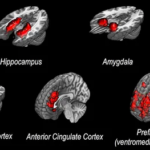Fine-tune your prompts for better task performance

When it comes to task performance, precision is key. Be it you’re working on creative writing, analytical tasks, code generation, data analysis, or visualization, the quality of your output depends on the clarity and specificity of your prompts. In this blog, we’ll explore three strategies for fine-tuning prompts fine-tuning strategies for precision in task performance, providing you with practical tips and examples to improve your productivity and accuracy.
Are you tired of mediocre results from your tasks? Do you struggle to get the output you need from your language models, code generators, or data analysis tools? The solution lies in the power of fine-tuned prompts. By crafting precise, specific, and well-structured prompts, you can unlock the full potential of your tools and achieve exceptional results through effective prompt fine-tuning.
The importance of fine-tuning prompts in Task Performance
Prompts and their fine-tuning are the foundation of task performance. They provide the instructions, guidelines, and constraints that shape the output of your tools. A well-crafted, fine-tuned prompt can make all the difference between mediocre and exceptional results. However, a poorly designed prompt without proper fine-tuning can lead to confusion, inaccuracies, and wasted time.
Fine-Tuning Prompts for Creative Writing vs. Analytical Tasks
When it comes to creative writing and analytical tasks, the type of prompt you use can significantly impact the quality of your output. Creative writing prompts are designed to inspire imagination and creativity, while analytical tasks require more structured and specific prompts to ensure accuracy and precision. Both types benefit from careful prompt fine-tuning.
Creative Writing Prompts
Creative writing prompts are often open-ended and designed to spark imagination. They might include:
- “Write a short story about a character who discovers a hidden world”
- “Describe a futuristic cityscape”
- “Imagine you are a time traveller who has just arrived in ancient Egypt”
These prompts encourage writers to think outside the box and explore new ideas. However, they can also lead to vague or unclear writing if not properly guided through effective prompt fine-tuning.
Analytical Tasks
Analytical tasks, on the other hand, require more structured and specific prompts to ensure accuracy and precision. These prompts might include:
- “Analyze the impact of climate change on global food production”
- “Compare and contrast the economic policies of two different countries”
- “Evaluate the effectiveness of a new marketing strategy”
These prompts require writers to provide clear, concise, and well-supported arguments, making them more suitable for analytical tasks. Fine-tuning these prompts is crucial for obtaining precise results.
Example:
Suppose you’re asked to write a creative short story about a character who discovers a hidden world. A good fine-tuned prompt might look like this:
“Write a 1,000-word short story about a young adventurer who stumbles upon a hidden world within their reflection. Explore the themes of identity, self-discovery, and the power of imagination. Use vivid descriptions and sensory details to bring the world to life.”
On the other hand, if you’re asked to analyze the impact of climate change on global food production, a good fine-tuned prompt might look like this:
“Write a 1,500-word report analyzing the effects of climate change on global food production. Provide data and statistics to support your arguments, and discuss potential solutions to mitigate the impact of climate change on food security. Use clear and concise language, and include visual aids such as charts and graphs to illustrate your points.”
Fine-Tuning Prompts for Code Generation
When it comes to generating code, the precision and clarity of your prompts are crucial. Code generation prompts need to be well-defined, specifying the programming language, the functionality required, and any constraints or preferences. Proper fine-tuning ensures more accurate and efficient code output.
Example 1: Basic Code Generation
Prompt: “Generate a Python function that takes a list of integers and returns a new list containing only the even numbers.”
Explanation:
For effective code generation:
- Specify the Language: Clearly state the programming language to ensure compatibility with the desired environment.
- Define the Functionality: Describe what the code should accomplish in detail.
- Include Constraints: Mention any constraints or preferences, such as performance requirements or style guidelines.
Example 2: Advanced Code Generation
Prompt: “Write a JavaScript function to fetch data from a REST API, handle errors gracefully, and display the results in a table format on a web page.”
Explanation:
For more complex code generation:
- Detail the Process: Outline the specific steps the code should follow.
- Incorporate Error Handling: Ensure the code includes mechanisms to handle potential issues.
- Specify Output Format: Describe how the results should be presented or used.
Customizing prompts for code generation through fine-tuning can significantly improve the quality and relevance of the generated code, making it more suited to your specific needs.
Customizing Prompts for Data Analysis and Visualization
In data analysis and visualization, prompts need to be carefully fine-tuned to guide the AI in interpreting data correctly and generating meaningful visualizations.
Example 1: Basic Data Analysis
Prompt: “Analyze the sales data for the past quarter and identify any significant trends or anomalies.”

Explanation:
For effective data analysis:
- Define the Data Scope: Specify the dataset and time to be analyzed.
- Highlight Key Metrics: Focus on important metrics like trends or anomalies.
Request Insights: Ask for actionable insights based on the analysis.
Example 2: Data Visualization
Prompt: “Create a pie chart to show the distribution of sales across different regions and provide a summary of the insights.”

Explanation:
For creating effective visualizations:
- Specify the Chart Type: Indicate the type of visualization that best represents the data.
- Include Data Details: Provide information on what data should be included in the visualization.
- Request Summary: Ask for a brief explanation of the visualized data to aid understanding.
By customizing and fine-tuning prompts for data analysis and visualization, you can ensure that the outputs are relevant, insightful, and easy to interpret.
Quiz Time!
What is the key benefit of fine-tuning prompts for creative writing and analytical tasks?
- It makes the output more visually appealing
- It helps in producing more precise and relevant results
- It allows you to generate random outputs
- It increases the length of the response
Follow our LinkedIn page for never-ending AI and Tech updates!






